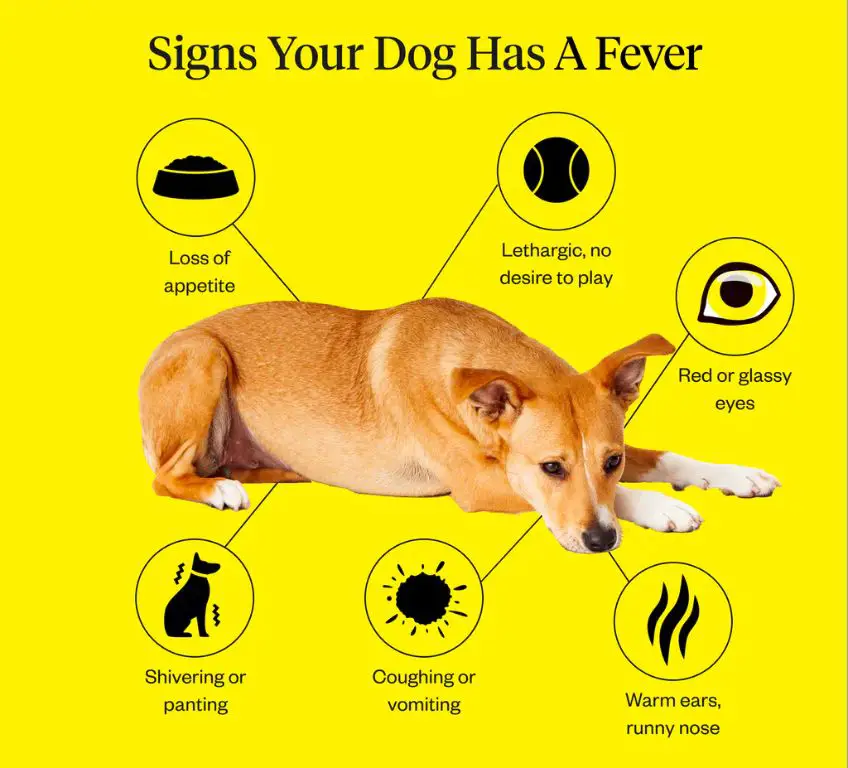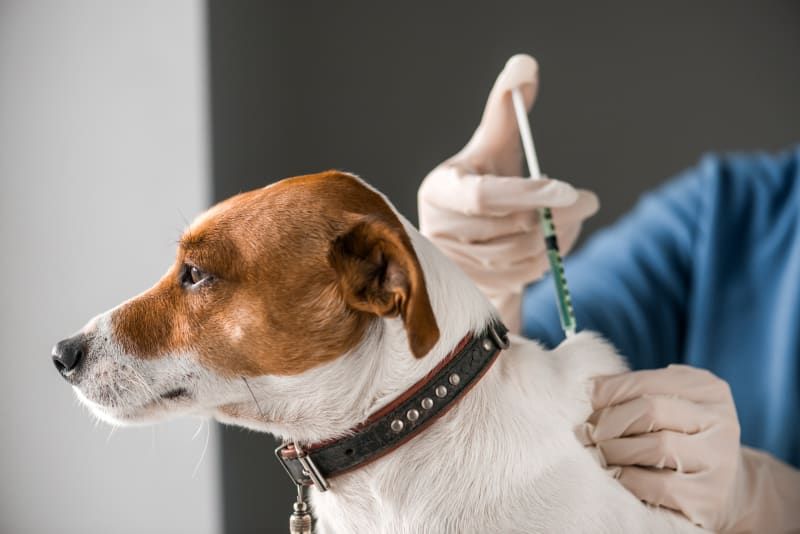Introduction
A dog’s nose can tell you a lot about their health. Most owners are familiar with the general wisdom that a cold, wet nose equals a healthy dog. So when you notice your dog’s nose becoming abnormally warm or dry, it’s only natural to wonder if something is wrong.
A warm nose is often one of the first signs that your dog may be coming down with an illness, especially a fever. But not all dogs with warm noses have fevers. There are other possible explanations for this change in your dog’s nose temperature.
In this article, we’ll explore the causes of a warm dog nose, how to check for fever, when to call the vet, and how to bring your dog’s temperature back down to normal.
Normal Dog Nose Temperature
A dog’s nose is an important part of how they regulate body temperature. In healthy dogs, the temperature of the nose is a bit cooler than the rest of their body. On average, a dog’s nose will be between 99-102°F. This is a few degrees lower than their normal body temperature, which ranges from 101-102.5°F.
There are a few reasons why a dog’s nose is slightly cooler than the rest of their body:
- Dogs sweat through their paw pads and nose, which cools these areas.
- The nose needs to be cooler so scent receptors can work properly.
- Cooler nose helps regulate overall body temperature.

So in a healthy dog, you can expect the nose to feel wet and cool to the touch. A warm, dry nose could indicate a problem.
Causes of Warm Nose in Dogs
There are several reasons why a dog’s nose may feel warmer than usual that do not indicate a fever or illness:
Emotion/Excitement
Dogs’ noses can feel warm when they are excited, happy, anxious, or stressed. An emotional reaction causes increased blood flow to the nose, which heats it up temporarily. This is very common when greeting an owner or when playing. The warmth should go away once the dog calms down.
Environment
Ambient heat can also warm up a dog’s nose, such as after spending time outdoors on a hot day or sitting near a heating vent indoors. This environmental cause does not signify sickness.
Breed
Some dog breeds naturally have warmer noses than others. For example, pugs and bulldogs tend to have warmer noses year-round due to their respiratory system anatomy. This is normal for these breeds and not a fever indicator unless other symptoms are present.
Fever Symptoms in Dogs
When a dog has a fever, they will often display a variety of symptoms and behavioral changes. Some of the most common symptoms of fever in dogs include:

- Lethargy and lack of energy
- Loss of appetite or refusal to eat
- Increased heart rate
- Panting and restlessness
- Vomiting
- Shivering
- Dehydration
A feverish dog may alternate between shivering and panting, become less active or playful, seem more anxious or uncomfortable, and lose interest in food and water. Other potential symptoms include watery eyes, runny nose, coughing, diarrhea, skin rashes, and discharge or inflammation in the eyes, mouth, ears or genitals. These signs indicate the body is attempting to fight an infection.
Taking a Dog’s Temperature
The most accurate way to take a dog’s temperature is rectally with a digital thermometer designed specifically for pets. To take a rectal temperature:
- Apply a small amount of lubricant, like petroleum jelly or KY jelly, to the bulb of the thermometer.
- Gently insert the thermometer about 1 inch into the dog’s rectum.
- Wait for the thermometer to beep, indicating it has registered the temperature.
- Remove the thermometer and check the reading.

Normal rectal temperature for dogs ranges between 99.5 and 102.5°F (37.5 and 39.2°C). Temperatures above 103°F (39.4°C) are considered abnormal and possibly indicative of fever.
When to See the Vet
It is generally a good idea to take your dog to the vet if its nose remains unusually warm for over 24 hours. An abnormally warm nose along with other symptoms like lethargy, lack of appetite, vomiting, or diarrhea could be indicative of an underlying illness that requires veterinary attention.
You should make an appointment with your vet promptly if your dog has a fever above 103°F. Fevers this high can lead to seizures and be life-threatening if left untreated. Prolonged fevers in dogs could also be a sign of a serious systemic infection that needs medical care.
Seeking timely veterinary care is crucial for bringing your dog’s fever under control and preventing any complications or lasting health effects. Your vet will examine your dog and run tests to determine the cause of the fever so they can prescribe appropriate treatment. With proper care guided by your vet, your furry friend should make a full recovery.
Treating a Fever
If your dog has a fever, some of the main ways to help bring their temperature down and make them more comfortable include:
Rest – Make sure your dog has a quiet, comfortable place to rest indoors. Rest allows their body to conserve energy towards fighting off infection.
Fluids – Ensure your dog has fresh water available at all times. You can also mix unflavored Pedialyte with water to help replenish electrolytes. Ice cubes can help increase fluid intake.
Cooling pads – Place self-cooling gel pads or cool (not cold) wet washcloths underneath your dog to help dissipate heat. Focus on paw pads, neck and behind the ears. Avoid extreme temperature changes.
Preventing Fevers
There are a few things you can do to help prevent your dog from developing a fever:

Vaccinations – One of the best ways to prevent fever is to keep your dog up-to-date on all their core vaccines. These include vaccines for distemper, parvovirus, adenovirus, parainfluenza, coronavirus, leptospirosis, Lyme disease, and rabies. Vaccines help strengthen your dog’s immune system and make them less susceptible to viral and bacterial infections that can cause fever.
Avoid Heatstroke – Never leave your dog alone in a hot car or outside in warm weather for extended periods. Dogs can overheat very quickly, which often leads to fever. Make sure your dog has access to shade and fresh water. Walk them in the early morning or evening when temperatures are cooler.
By vaccinating your dog and preventing overheating, you can help reduce their risk of developing a fever. However, even healthy dogs can sometimes get sick. So it’s still important to monitor for any signs of fever and contact your vet if you have concerns.
The Bottom Line
While a dog’s warm, dry nose is normal, a hot, dry nose could indicate a fever. Other signs of fever in dogs include lethargy, shivering, warm ears, and a higher than normal temperature when taken rectally. If your dog’s nose is hot and they are exhibiting other symptoms of illness, it’s best to see your vet to determine if a fever is present and requires treatment. With treatment and rest, most fevers in dogs will resolve on their own. Ultimately, a dog’s nose on its own is not a definitive indicator of fever – be sure to check for other signs as well.
References
Center for Disease Control and Prevention. (2022). Canine Influenza. Cdc.gov. https://www.cdc.gov/flu/canineflu/
American Kennel Club. (2021). How to Take a Dog’s Temperature and Why It’s Important. Akc.org. https://www.akc.org/expert-advice/health/how-to-take-dogs-temperature/
Collins, L. (2020). What is a Normal Temperature for Dogs? Petmd.com. https://www.petmd.com/dog/general-health/whats-normal-body-temperature-dogs
Hodge, G. (2019). Fever in Dogs: Causes and What to Do Next. American Animal Hospital Association. https://www.aaha.org/your-pet/pet-owner-education/ask-aaha/fever-dogs/
Miller, L. (2021). Fevers in Dogs: Causes and Treatment. Hill’s Pet Nutrition. https://www.hillspet.com/dog-care/healthcare/fever-in-dogs